

Welcome to our April edition if DQ Magazine!
It’s another jam-packed edition of your favourite (obviously ;)) dog magazine.
As we continue to celebrate our furry friends and the joy they bring into our lives, we are excited to bring you another issue full of informative articles and helpful tips
Our breed profile this month is on the Greyhound, a fascinating, ancient breed that has been the treasured companion of high-society individuals for thousands of years. Then we have a raft of articles for the passionate pet owner; from nutrition and exercise to behaviour and training, we have it all covered.
We would like to take this opportunity to thank you, our loyal readers, for your continued support and feedback. We value your input and continue to strive to make our magazine the best it can be. We hope you enjoy reading this issue and look forward to bringing you even more exciting content in the future.
With lots of love,
Lizzie and the DQ team
Designer: Anne Royden-Turner
DQ | 5B 3
Dr Lizzie Harrison | Editor xxx
IN THIS ISSUE



DQ | 5B 4
DIGITAL ISSUE 5B | 2023 06 The English Greyhound Bred to speed 16 Your dogs Meet Luna, Harli and Pixi 18 Home Alone The ultimate guide to leaving your dog at home without the guilt 24 Say ‘no’ to the mess How to have dogs and a clean house at the same time 28 Rare colours Are they really a problem? 32 Hiding at home When dogs don’t want to go out
36 Operant conditioning
Understanding positive reinforcement
44 Be original Dogs are only the same in that they are all different
can find in your kitchen
50 10 healthy treats You
veg into your dog’s diet
56 Vegetable muffins Sneaking
is key to a better future
animal healthcare and disease prevention
58 Education
Teaching
with your companion
62 Travelling
DQ
dog questions answered
68 Ask
Your
we love
70 Products





















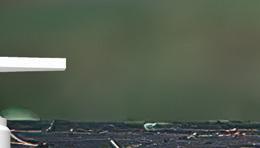
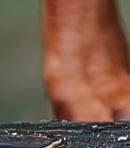


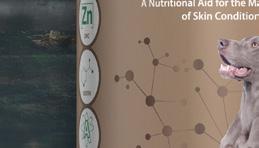



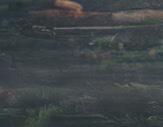




















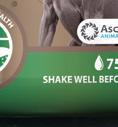

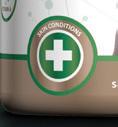
































































































































































































































































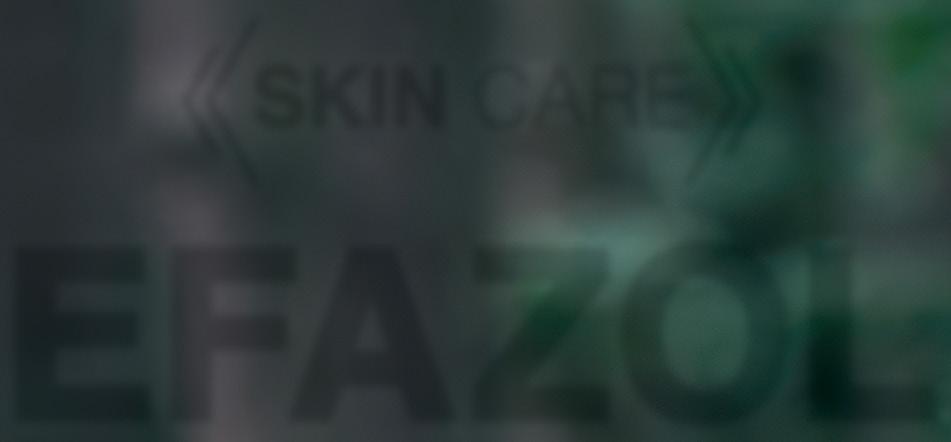











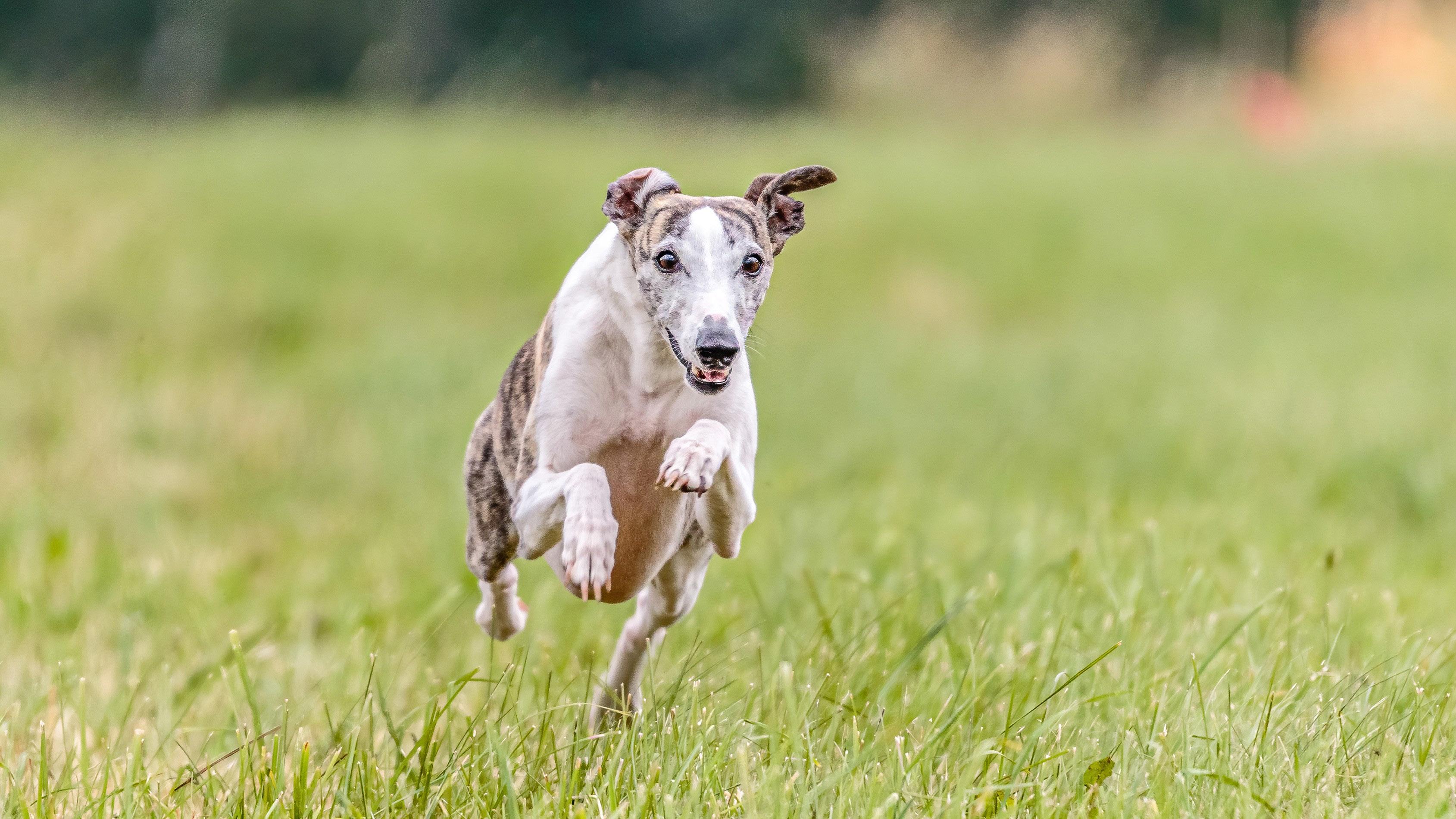
DQ | 5B 6
BREED PROFILE
The English Greyhound
BRED TO SPEED
DQ | 5B 7 BREED PROFILE
TEXT: RHIANNON CECIL
This impressive canine breed is built for hunting and racing. These swift and dignified dogs sparkle with intelligence and have captured many hearts over the years; despite their sleek, race-car-like appearance, they're a relaxed and easy-going addition to any home, making them perfect family pets.
GREYHOUND OVERVIEW
Greyhounds are sighthounds, meaning they depend on their eyes more than their noses to track prey. That's not to say that sighthounds have a diminished sense of smell; they just have exceptional eyesight, which they use to spot prey over long distances. Alongside their ability to spot small animals from afar, they have the speed to catch them and the endurance to track their prey over a long distance. A Greyhound can reach speeds of over 60km an hour over short distances. They may be no match for a cheetah, but Greyhounds have been dubbed 'the fastest dogs in the world.' Today, Greyhounds are mainly bred for coursing, racing, showing, and companionship.
Many popular breeds of dog are said to descend from the ancient Greyhounds, including the following:
1. Italian Greyhound: The Italian Greyhound is the smallest of the Greyhound family. Weighing only 7kg, they're the perfect miniature version of the standard Greyhound. This is a relatively modern breed, and they are bred more for lap dogging and less for hunting. Italian Greyhounds have the same loving temperament as their larger counterparts and make excellent family pets. Although they still have a strong prey drive, they love chasing things for fun rather than making a whole day of it.
2. Spanish Greyhound: The Spanish Greyhound is slightly smaller than the Standard Greyhound and weighs in at a maximum of 27kg. These Greyhounds have slightly longer ears and thinner, sharper faces. The ancient Egyptians often depicted animals on their tombs, and it's thought that one of the dogs commonly depicted is a version of the Spanish Greyhound.

DQ | 5B 8 BREED PROFILE
3. Afghan Hound: Perhaps the most striking of all the Greyhound descendants, this breed caught the attention of painters Picasso and Salvador Dali and singer Marianne Faithful. Even the iconic Barbie has an Afghan Hound named Beauty.
4. Arabic Greyhound: These Greyhounds are also known as 'Sloughi' and were first bred in Northern Africa. Unlike the other Greyhounds, Sloighi come in one single colour, normally grey or tan. These dogs are exceptionally vocal and are often used as guard dogs on farmsteads.

5. Scottish Deerhound: The Scottish Greyhound or Scottish Deerhound is closely related and similar in appearance to the Irish Wolfhound. The Deerhound was bred to hunt red deer in Scotland and has a wiry, low-
maintenance coat. Scottish Deerhounds are unsuitable for urban living and need space to run and play. This breed can mature to a whopping 81cm and weigh over 45kg. They're brave and athletic — able to take down prey almost three times their size.
6. Russian Greyhound: The Russian Greyhound, aka 'Borzoi', came about by breeding an Afghan Hound and a long-haired sheepdog. Borzoi means 'fast' in archaic Russian, and the name was given to any tall, long-haired hunting dog in Russia at the time. Borzoi were bred in Russia for hundreds of years by nobility and were used for hunting foxes, wolves, and hare on the Russian planes. In fact, the breed was initially called the Russian Wolfhound due to its ability to hunt wolves.
DQ | 5B 9 BREED PROFILE
7. Persian Greyhound: Also called Salukis, these gorgeous greyhounds have low-hanging, long and silky ears, giving them a very distinctive look. Their coat is longer and feathered compared to standard Greyhounds. Salukis are thought to be one of the oldest dog breeds; they were bred by nobility to hunt with strength and grace. Their tremendous agility and speed made them suitable for hunting animals as large as the gazelle.
8. Whippets: Whippets are essentially smaller versions of the English Greyhound. They have all the same features and are lightning-fast! This breed is popular among Greyhound owners as they're docile and don't need much space. Yet, as relaxed as Whippets are, take their lead off, and you will see a true sighthound in action. Whippets were bred to hunt rabbits, used as show dogs and for amateur dog racing. They are considered medium-sized and can grow to around 48cm, weighing up to 16 kg for larger males.
GREYHOUND HISTORY

The Greyhound is an ancient breed that originated in the Middle East and North Africa, and for centuries, members of the nobility have sported these elegant hounds by their sides. Greyhounds have made an impression on many cultures. In ancient Egypt, approximately 5000 years ago, Greyhound-like dogs were used to detect and capture wildlife in the Egyptian deserts. They were so revered that Pharaohs made statues of their dogs and buried them in tombs like royalty. Greyhounds were also immortalised in Greek Mythology. Then, in the Dark Ages, Greyhounds made their way to Europe. They were banned from being kept within 10 miles of the King's land at the time, as they proved to be such spectacular hunters. Greyhounds were then the first European dogs to be brought to America. On Christopher Columbus' second trip to North America in 1493, he brought the Greyhound and Mastiff. In his play, 'Henry V', Shakespeare captures the demeanour of English soldiers going to war and likens it to Greyhound's behaviour before a race.
Aside from hunting, Greyhounds were also used as sporting dogs. Greek writing depicts Greyhound coursing as early as 150 AD. Coursing is the sport of sighthounds, where two or more sighthounds chase hare or small game over an open field. Coursing became popular in the British Isles in the 1600s, when Thomas Howard, Duke of Norfolk, drew up the first set of rules.
DQ | 5B 10 BREED PROFILE

DQ | 5B 11 BREED PROFILE
Greyhounds are perfect for a full-family home. They're sociable and affectionate and thrive off the comings and goings of their family members. Although their superior athleticism allows them to reach speeds of over 60km an hour, they love nothing more than to spend the day lounging around at home.
The Greyhound is a hunting dog at heart, so sharing a home with rabbits and other small creatures is a no-go. They have, however, been known to get along well with cats. It is also worth noting that as sighthounds, they are constantly on the lookout for prey, so keeping your Greyhound on a well-fenced-off property is a must to prevent him from chasing the neighbour's cat or local rabbit population. The same goes for trips to the park — hold on tight, for your Greyhound could dart off at any moment, leaving you in a cloud of dust.
walk is ample. Like sprinters, they prefer short, highintensity training sessions. A good run, with the opportunity to safely sprint flat out, or a nice hike would be considered a wonderful day out for a Greyhound.
Handy Greyhound facts:
• Greyhounds are the fastest dog breed in the world: The top three fastest breeds in the world are all descended from the original, with the Saluki and Afghan Hound taking the second and third spots.

• Short-haired greyhounds: Short-haired Greyhounds don't do well in miserable weather and require suitable attire when it's chilly or raining.
• Be careful where you let your Greyhound offleash: Greyhounds have an incredible prey drive. The instant they spot something worth chasing, they will
DQ | 5B 12 BREED PROFILE
bolt as if on a real hunt. These powerful dogs can reach speeds of 60km per hour, so there's no chance of catching up to him on foot.
• Don't use electric fencing: A Greyhound's prey drive is so strong that he would risk electrocution to catch the object of his desire.
• Greyhounds are friendly: Greyhounds are very social dogs and get along with other canines and family members. They enjoy being part of a larger pack and don't like being left by themselves for long.
GREYHOUND HEALTH
Greyhounds are generally healthy breeds, but like with all breeds, there are a few things to look out for that are specific to Greyhounds:

• Bloat: Greyhounds are deep-chested and are prone to bloat and gastric torsion. Bloat is a severe and often
fatal condition in which the stomach becomes enlarged and then predisposed to twisting.
• Eye conditions: Greyhounds suffer from two major eye conditions: Punnus and Progressive Retinal Atrophy. Both conditions can cause blindness. It is important to check your dog's eyes regularly for any changes.
• Injuries: Like all athletes, Greyhounds are susceptible to injuries. Some common Greyhound injuries include muscle tears, bone fractures and toe injuries. Inspect your Greyhound's legs after having a run around to spot any problems early and avoid further damage developing.
IS A GREYHOUND, THE RIGHT DOG FOR YOU?
With so many dog breeds out there and each breed being different from the others, it's often difficult to choose a dog breed. We say try them all, but there are only so many
DQ | 5B 13 BREED PROFILE

DQ | 5B 14 BREED PROFILE
dog years in one human lifetime. Read on to find out if a Greyhound is the right breed for you.

A Greyhound might be the right dog for you if:
• You want to feel like an ancient noble with a Greyhound by your side.
• You have a completely fenced-off and secure garden.
• You have a safe place for a Greyhound to run and play daily.
• You live in the city — as long as you take your Greyhound for regular walks, they adapt well to city living.
• You have a lot of strangers over to the house; Greyhounds are generally not people aggressive but can be timid if not socialised early enough.
• You enjoy playing extreme fetch. Make sure you get a ball launcher to save your arm from repetitive strain injuries!
A Greyhound might not be the right dog for you if:
• You don't have the time for one proper play session a day, as although they're docile, these dogs do need daily exercise.
• You have a property border that is not robustly secured; these dogs are determined to chase any small creatures they see, so make sure they have very secure fencing to keep them safe.
• You live in places with extreme cold weather; Greyhounds don't do well in chilly weather, so make sure to wrap them up tightly.
• You prefer a relaxed dog that won't try and dart off every time a rabbit crosses your path.
FINAL THOUGHTS
Having a Greyhound in your home is a once-in-a-lifetime experience. Their docile temperaments and extreme athleticism make for an interesting juxtaposition, and there's no way to stop yourself from falling in love with their dignified expressions, especially when they act like total goofballs. The Greyhound aesthetic is as noble and distinguished as their ancestors. As a hunting dog, this breed is a force to be reckoned with, but in your home, he's a sleek and beautiful ball of affection you'll look forward to coming home to every day.
DQ | 5B 15 BREED PROFILE
Meet Luna, Harli and Pixi
This month we caught up with Nicci and her three adorable pups – Luna, Harli and Pixi.
LUNA
BORN 22 JULY 2020
Luna is small in size but huge in spirit. Her size means nothing, for her heart and bravery could not be bigger. Luna loves a walk, loves to sniff and run, and wags her entire body when she wags her fluffy tail. She suffers from dry eye syndrome and requires eye drops five times a day. She also has raised liver enzymes which make her a high anaesthetic risk. But none of these problems stops Luna from living her best life!
HARLI
BORN 18 MARCH 2021
Harli is fun-loving, with an adventurous spirit and a loving heart. She loves being the centre of attention, meeting new people and visiting new places. You can't help but smile when meeting Harli.
DQ | 5B 16
YOUR DOGS
Pixi is tiny but has absolutely no fear and believes she is a Rottweiler. She has endless amounts of energy and keeps her sisters on their toes.
IN NICCI'S WORDS:
"They are our babies, and we literally don't go anywhere without them. If it's not pet friendly, we don't go and have even created an IG and FB page called dogfriendlyjozi, which features all of our adventures. These girls are very



friendly accommodation, restaurants and parks."
"They should definitely be DQ famous because not only are they too cute for words, but they are also influencers and share all their favourite pet products as well as their adventures online. They are having fun, and while doing it, they are sharing their story with all who follow them. Also, cute dogs increase the hormone oxytocin in humans, so they positively influence all those who see them – what's not to love?"
DQ | 5B 17
YOUR DOGS Luna Harli
Pixi
HOME ALONE
THE ULTIMATE GUIDE TO LEAVING YOUR DOG AT HOME WITHOUT THE GUILT

DQ | 5B 18 DOGS AT HOME
TEXT: RHIANNON CECIL
If we could, we would take our dogs with us wherever we went. We’d probably also work from home, with little - or big -bodies curled up around our feet. We’d take breaks so we could have plenty of playtime and make sure our loyal friends never spent a moment alone.
Yet, for most of us, spending every day at home is far from possible, and when we walk out the door, the pet parent guilt is impossible to ignore. Luckily, there’s plenty you can do to make your dog’s time alone at home much more enjoyable.

DQ | 5B 19
SOME CONSIDERATIONS WHEN LEAVING YOUR DOG AT HOME
Different dogs have unique needs, and deciding how to make your dog’s alone time more bearable depends on his individual personality. Consider the following when coming up with a home alone routine that works for you both:
• His bladder control: How often your dog needs to go outside depends on several factors, including his age, size, and breed. Puppies and older dogs typically need more bathroom breaks, so if you have to lock your dog in the house, come up with a routine so he doesn’t have any accidents.
• His emotional needs: Think about your dog’s personality. Is he super social, or does he like his alone time? Does he need lots of space to move, or is he happy curled up on the couch? If he needs plenty of exercise and human interaction, he may become destructive if he’s left alone for long periods.
• Changes in behaviour: If you’ve noticed behaviour changes in your dog when you leave him alone for long periods, it might be time to take more decisive action.
TIPS AND TRICKS TO MAKE ALONE TIME FUN FOR YOUR DOG
With these simple tips, you can transform your dog’s alone time from something stressful into something fun.
1. GIVE YOUR DOG A SAFE SPACE
A safe space is an excellent tool for lowering your dog’s stress levels and also ensures your belongings are still intact when you come home after a long day. If he feels anxious when you’re not home, he’ll draw comfort from having his own space.
Ensure he doesn’t have access to dangerous chemicals, electrical cords or food, and take his collar off when he’s home alone — if it gets caught on something, he could asphyxiate.
2. THINK ABOUT THE TEMPERATURE
If your dog doesn’t have much space, ensure the rooms he can access are at an appropriate temperature. In summer, there should be a cool breeze running through the room, and in winter, have some hot water bottles or a heater to regulate the temperature.

DQ | 5B 20 DOGS AT HOME
3. LEAVE SOME BACKGROUND NOISE
Soft noise in the background can help alleviate loneliness and break up the monotony of the day. It also drowns out background noise that might cause anxiety or excessive barking, like people walking past your gate.

4. GIVE YOUR DOG SOMETHING TO DO
There are plenty of toys on the market designed to keep your dog busy when he’s home alone. Find a food puzzle toy that rewards him when he figures it out. Find a few toy options and swap them around to keep him entertained.
5. EXERCISE BEFORE YOU LEAVE
One of the best things you can do before you leave for the day is to give your dog some exercise. If you tire him out beforehand, he’ll nap while you’re out, which is better for him, and your furniture!
6. HIRE A DOG WALKER
A short interlude with some company and a little exercise will change your dog’s day. There are plenty of reputable dog walking businesses out there, so ask some fellow dog lovers in your area for recommendations.
Particularly active breeds need lots of exercise, or they may become destructive and anxious, so if you have a high-energy breed, dog walkers may be a necessity, not a luxury.
7. CONSIDER DOGGY DAYCARE
As the name suggests, doggy daycare is a place where you can leave your dog while you’re at work. They are filled with activities, and the staff walk and play with your dog during the day. Most doggy daycare businesses allocate days for different breeds and sizes, so check with your local dogloving community and schedule a viewing.
DQ | 5B 21 DOGS AT HOME
8. GET ANOTHER DOG
If your dog is well-socialised, he would probably love having a friend to keep him company when you’re out. Dogs are pack animals, and they do best when they have company. Of course, some dogs don’t like the company of other dogs, and if your dog is one of those, pushing another dog into his space could have tragic consequences.
WHAT YOU SHOULDN’T DO WHEN LEAVING YOUR DOG HOME ALONE
Without even realising, there are things you might do that make your dog’s alone time more nerve-wracking. Keep the following ‘don’ts’ in mind when you set out for your work day:

DON’T
• Make a big fuss of your dog before you leave: Dogs thrive on routine, and a sudden change in your behaviour will elevate his stress levels. Don’t act stressed before you leave, or cover him in hugs and kisses. Rather walk out the door like there’s nothing wrong, and he’ll pick up on that instead.
• Forget midday walks: If your dog doesn’t have access to the outdoors while you’re out, he’ll need to get outside around lunchtime for a bathroom break. A dog walker is a perfect option if you can’t make it home yourself.
• Leave anything chewable lying around: Put shoes, books and remote controls away before you leave.
• Leave him for too long: Even the most well-adjusted dog will start to get anxious when you’re gone for extended periods. Have a friend or family member on call if you get held up, and hire a pet sitter if you need to travel.
FINAL THOUGHTS
Following these simple steps will make your dog's life that much more pleasant while you’re at work. If, however, your dog suffers from separation anxiety, the steps outlined above might not be enough, and you may need a more comprehensive approach with the support of your vet and a behaviourist to negotiate alone time.
But, for your average dog, these steps should be more than enough to keep him happy and waiting to greet you with a wagging tail after a long day in the office.
DQ | 5B 22 DOGS AT HOME

DQ | 5B 23 FOCUS
The Afghan Hound is said to be a descendant of the Greyhound.
Say ‘no’
mess TO THE
HOW TO HAVE DOGS AND A CLEAN HOUSE AT THE SAME TIME

DQ | 5B 24 DOGS AT HOME
TEXT: RHIANNON CECIL
While having a dog in the house does wonders for your mental health, without the right tips and tools, the muddy pawprints and hairy furniture might be enough to drive you through the roof.
Luckily, there is a way to have a dog and a clean house. We’ve compiled some tips and tricks to help you stay sane - and relatively clean - in a multispecies home.

DQ | 5B 25 DOGS AT HOME
1. SPLURGE ON THE MATS
Equip any door from the outside of the house with a small doormat to catch any dirt or leaves your dog might track into the house.
Then, put ‘outdoor’ rugs inside and place them by the couches, tables, and anywhere else your dog likes to hang out. Rugs sold as ‘outdoor’ rugs are easy to clean, and any spillage from a stray tail across the coffee table is easy to fix if it lands on these rugs.
2. REPAINT YOUR SURFACES
Some dark paint is your best friend in a house full of dogs. A nice coat on your surfaces is an excellent way to hide nose prints and muddy tail splatter.
3. LATEX GLOVES ARE YOUR BEST FRIEND
Lint rollers will only get you so far, especially if you have a heavy shedder or a long-haired breed. Instead, don the latex gloves and wipe your clothing, couches and bedding with your hand. The fur sticks to the gloves and makes your life a whole lot easier.
The best part is you can reuse your gloves. Just run them under some warm water, and the fur will come right off.
4. BUY SOME CHEAP THROWS
Even the hardiest furniture will start to look a bit shabby in the wake of excessive canine activity. A well-placedand inexpensive - throw could save your couch and give your home that interior design feel all in one. Pick light, machine-washable fabrics, and you’re good to go.
5. ADD PET ACCESSORIES TO YOUR CLEANING ROUTINE
Unwashed beds, toys and blankets can quickly build up that doggy odour. Chuck them in the washing machine if they’re machine washable, and wash everything else in your kitchen sink. Let them dry outside in the sun to zap the doggy smell.

DQ | 5B 26 DOGS AT HOME
6. INVEST IN A QUALITY VACUUM CLEANER
No matter how conscientious you are, there will be dog hair in your home. Make sure your vacuum cleaner is up to the task of dog hair, and consider an automatic vacuum to clean your floors while you sleep.


7. KEEP YOUR DOG CLEAN
You can’t blame a dirty dog for making your house a mess. Regular grooming sessions can go a long way in minimizing the mess. Fun fact — trimming your dog’s nails regularly will help decrease the amount of dirt he tracks in from outside.
8. PUT A DOG CLEANING STATION AT YOUR FRONT DOOR
It might sound crazy, but having a few essentials handy to catch your dog as he comes into the house could save you
more work down the line. Have a durable outdoor mat, a cloth for wiping dirty paws and a dog brush to get debris out of his coat before he transfers them to the couches.
9. USE NATURE’S TOOLS
Sunlight and fresh air will do wonders to remove dog smells. Air out your home regularly and put dog beds and throws in the sun to kill the smells.
10.
HAVE THE STAIN REMOVER HANDY
Accidents happen, and the quicker you clean them up, the better. Choose an enzyme-based stain cleaner and keep it where you can get at it quickly.
DQ | 5B 27 DOGS AT HOME
RARE COLOURS

DQ | 5B 28 DOG TRENDS
‘
ARE THEY REALLY A PROBLEM?
Rare colours’ is a term we often hear these days in the dog world, and despite the repeated warnings from experts advising the public to avoid them at all costs, people still seem to seek them out actively.

WHO BUYS THEM?
Many people seeking out these ‘rare colour’ dogs aren’t interested in the health testing or pedigree of the dog they are purchasing but rather just want a ‘different colour’. This seems to be a symptom of current society, with many born into a culture of endless choices, rampant consumerism and an insatiable need for Instagram approval. People seem to simply want to stand out from the crowd, and sadly, there are scores of unethical breeders lining up to take money from these ill-informed individuals.
WHICH BREEDS ARE AFFECTED?
‘Rare colours’ seem to only plague the popular breeds, supporting the longheld conviction of many people in the show world that these dogs are simply being bred for profit – another reason for puppy shoppers to avoid them. And it is not, contrary to popular belief, only the smaller breeds that are plagued by this problem. Yes, ‘platinum’ Pugs, ‘blue and tan’ Dachshunds and ‘lilac’
DQ | 5B 29 DOG TRENDS


DQ | 5B 30 DOG TRENDS
Frenchies are commonly seen, but there has been a recent surge in interest in ‘fox red’ and ‘silver’ Labradors, showing the larger breeds are not immune to this phenomenon.
THE DARKER SIDE OF ‘RARE COLOURS’
‘Rare colours’ are nothing more than a clever marketing ploy, one that, sadly, often reels in the gullible with money to burn. Yet, if this wasn’t enough, there is a darker side to this ‘rare colour’ breeding that cuts far deeper than fashion and consumerism.
Many of these rare coloured breeds have been found to harbour health issues not usually found in their respective breeds. One example of these (found within the currently ‘trendy’ dilutes) is called Colour Dilution Alopecia, and it is so prevalent in blue dogs that it has actually been named ‘Blue Dog Syndrome’. The affected dogs develop patchy coats, and the condition can eventually result in distressing skin inflammation. This problem was undoubtedly known about by historical breeders of these dogs, which is why ‘blue’ is not a recognized colour for so many breeds.
As if the health concerns were not enough, many of these rare coloured dogs are exhibiting personalities and temperaments that are entirely at odds with that described in their respective breed standards. For instance, some of the rare coloured Frenchies have been seen to be aggressive, a trait that is almost unheard of in the breed generally.
TACKLING THE PROBLEM
DID YOU KNOW?
At the request of the Whippet Breed Council, the Kennel Club brought in a ban on the registration of merle Whippets. Merle is not a naturally occurring colour in Whippets, and unscrupulous breeding of this colour (merle to merle) can result in an increased incidence of deaf and blind puppies.
The only real way to tackle the problem is to keep trying to get the message out to the public about the dangers of this style of breeding and the kind of unscrupulous people who are involved. If we can avoid members of the public lining the pockets of these unethical breeders, they will soon stop breeding these kinds of dogs.
FINAL THOUGHTS
The bottom line is clear – please don’t fall for the hype or super-cute puppy pics. Ethical, responsible breeders are the people to go to if you want a pedigree puppy to add to the family. And, as the French Bulldog Club succinctly writes on their website: ‘Don’t buy a dog as a fashion accessory, buy a new handbag or pair of shoes instead’.
DQ | 5B 31 DOG TRENDS

DQ | 5B 32 DOG BEHAVIOUR
WHEN DOGS DON’T WANT TO GO OUT
Most of us assume that our dogs love to go outdoors even more than we do. Walk in the park, and you’ll see dogs joyously scampering around, chasing balls and running with their friends. Yet, whilst the vast majority of dogs love their time in nature and out of the house, you may be surprised to hear that many dogs feel so vulnerable about being outside that they would happily avoid it.
HOW THIS DEVELOPS
The situation can take many months to develop, or at least to reveal itself, or in the case of rescue dogs particularly, be triggered by a minor incident in the initial days after rehoming. The same can happen to young dogs and puppies due to overstimulation or meeting boisterous dogs that lack social skills.
Our expectations and beliefs and the needs of our dogs are often at odds. Our dogs communicate with us all the time, but we need to pay attention for this to be of any value. If we are sidetracked or busy when out with our dogs and miss an incident that occurs, our dogs can start to lose trust and confidence in us as their protectors and guardians. Even if we do witness the incident, we might not consider its impact on our dog. We have to be ‘in the moment’ to ensure our dogs enjoy their time outdoors.

DQ | 5B 33 DOG BEHAVIOUR
Once problematic behaviours develop, it is very easy to label them. If our dog becomes reluctant to go on walks or ‘suddenly’ becomes defensive around other dogs, we can jump to the wrong conclusion and misattribute the behaviour. Many of us react negatively if our dog begins to bark, growl or refuse to move when out walking without considering whether this behaviour is due to confusion, irritation, frustration, anxiety or pain. The point to remember is that dogs never do anything without reason. It is not in their nature to suddenly become lazy, disobedient or aggressive, but if threatened, afraid or sore, they can easily display these behaviours. This fear and worry will also take its toll on your dog both physically and mentally in other areas of their life.
So, if your dog is afraid to go out or behaves oddly when out of the house, you need to holistically consider what is going on and start taking steps to help him to feel better.
OBSERVATION AND RAPID ACTION ARE KEY
The best thing we can do for our dogs is to observe any new or odd behaviours and investigate their cause properly. Whether this means a visit to the vet or a call to the behaviourist, we need to prioritise objective assessments of our dog’s behaviours early on before they escalate. Dogs communicate with us constantly, and we need to become skilled at reading their body language, including the set of their tail, any tightening around the mouth or tension in the body.
Identifying issues early is crucial, as the longer the dog displays these behaviours, the more difficult the situation is to reverse and the more significant impact the stress will have had on your dog’s physical and mental state. Do not assume that the problem will fix itself or that your dog is


REMEMBER
Fear is an innate thing in all of us. It often doesn’t make sense, but without the ability to feel fear, life would be very dangerous. Humans are fortunate in that we are able to adjust our environment and behaviours to avoid the things that make us most fearful. This is not a luxury afforded to dogs. As their owners, we must act in their best interests and not force them to do things they don’t want to do. Instead, we need to take their fear seriously and help them to find ways to grow in confidence and deal with the demands of our human world.
DQ | 5B 34 DOG BEHAVIOUR
THE ROAD TO RECOVERY
It is possible to start making the dog’s world feel safe again. What is needed is the feeling of security, so home is the starting point of the rehabilitation process. The steps taken are very small, and the speed is dictated by the dog. He must be given a choice about whether or not he wants to venture outside and, if so, for how long.
Activities that lower stress levels are also important in the recovery process. Treat searches in the garden or around the house should be offered, as should places of rest both inside and outside the house. Another activity that can help to lower stress is chewing, and chew toys, treats or suitable bones can be very beneficial in
keeping anxious dogs calm. Training must also take a back seat while the problem is resolved, as expectations create stress.
Over time you can increase the amount your dog does outside, but this must not be rushed. As we gradually increase time outdoors, we must be observant for changes in behaviour or body language, however slight and use these indicators to guide whether or not our dog is ready to progress to the next step.


FINAL THOUGHTS
Our fast-moving world has victims, and dogs are often one of them. This is particularly problematic when owners are led to believe that extreme behaviour is bad behaviour and needs to be addressed with punitive techniques. This is quite obviously the wrong approach. The best way to help our dogs to rediscover their love of the great outdoors is through showing compassion and kindness to help restore their confidence. Promoting security and safety and stepping in when we are needed is part of our role, and we need to take this seriously.
DQ | 5B 35 DOG BEHAVIOUR
Operant conditioning
 TEXT: RHIANNON CECIL
TEXT: RHIANNON CECIL
DQ | 5B 36 DOG BEHAVIOUR
UNDERSTANDING POSITIVE REINFORCEMENT

DQ | 5B 37 DOG BEHAVIOUR
If you have a dog, the chances are you’ve heard of positive reinforcement — a training technique that relies on rewarding your dog when he offers you the desired behaviour.
The idea centres around making the right associations in your dog’s mind. If, for instance, your dog barks whenever you have visitors and you give him a tasty treat to try to keep him quiet, he’s going to bark every time someone comes over. If, on the other hand, he associates sitting quietly with getting a treat, he’s more likely to remain quiet and avoid barking. This kind of positive reinforcement training falls under the umbrella of operant conditioning.
OPERANT CONDITIONING EXPLAINED
You might have heard of Pavlov and his dogs — he rang a bell every time he fed them, and over time they associated the sound of the bell ringing with food, to the point that they began to salivate when they heard the bell, whether there was food around or not. This is known as classical conditioning.
Operant conditioning takes it a step further, and instead of honing a natural or automatic response — like salivating when there’s food around — you’re going to add or remove something from your dog’s environment to create a good or bad association with a specific behaviour. In other words, with operant conditioning, consequences shape behaviours.
THE FOUR PILLARS OF OPERANT CONDITIONING
Operant conditioning doesn’t use the terms positive and negative to mean good or bad. Instead, these terms are more mathematical — adding something or taking it away. Positive means adding something to the circumstance, like a treat, and negative means taking something away, like a toy.
The next two pillars revolve around whether the training increases or decreases the frequency of the behaviour you’re working with. ‘Reinforcement’ makes the behaviour more likely, whereas ‘punishment’ is meant to decrease the behaviour in question.
DQ | 5B 38 DOG BEHAVIOUR
STIMULUS BEHAVIOUR
POSITIVE REINFORCEMENT +R
POSITIVE PUNISHMENT +P
NEGATIVE REINFORCEMENT -R
NEGATIVE PUNISHMENT -P
Combining these pairs of pillars creates the four pillars of operant conditioning, which look like this:
• Positive reinforcement: This is the quadrant you should focus your dog’s training in. With positive reinforcement, you’re going to add something desirable to increase the frequency of your dog’s good behaviour. Give your dog something he loves, like treats and praise, when he does what you’re asking, and the chances are he’ll do it again to receive the same treatment.
• Positive punishment: Remember, ‘positive’ in scientific terms means to add something. So,
positive punishment is adding something to the equation to decrease a behaviour, like a smack. This should not form part of your dog’s training.
• Negative reinforcement: Negative means to take something away, and reinforcement means to encourage a behaviour, so negative reinforcement means removing something unpleasant from your dog’s environment to encourage him to repeat a behaviour. One example would be removing the pressure on a lead when the dog walks alongside you. This quadrant also has little place in animal training.

DQ | 5B 39 DOG BEHAVIOUR
• Negative punishment: Negative punishment is the second tool in your dog training arsenal. In this quadrant, you remove something your dog likes, like a toy or attention, to decrease the likelihood of a behaviour.
HERE IS ONE EXAMPLE OF HOW THE OPERANT CONDITIONING QUADRANTS WOULD APPLY TO A SCENARIO IN THE HOME: EXAMPLE - DIGGING IN THE FLOWER BEDS
Digging is a common challenge, especially with certain breeds like Dachshunds and Labradors. Using the operant conditioning approach, you could correct the behaviour in the following ways:
• Positive reinforcement: Give him a treat or a toy when you call him away from the flower beds, and he listens.
• Positive punishment: Give him a smack when he digs in the flower beds. This should not be done.
• Negative reinforcement: Remove pressure on your dog’s lead when he stops digging in he flower bed (negative reinforcement).
• Negative punishment: Withhold your attention when he is digging in the flower beds.
Using pillars one and four, you can successfully train your dog not to dig up the flowers simply by making him feel good when he doesn’t and ignoring him when he does. This method may take a little longer but is considerably more humane than physical punishments and pressure release.
SHAPING YOUR DOG’S BEHAVIOUR
As you can then see, operant conditioning is useful beyond simple obedience training. You can use this method to correct unwanted behaviours in your home or even teach complex tricks!
TIPS AND TRICKS FOR SHAPING BEHAVIOUR
Creating a strong bond with your dog is about working with him on his level. Dogs don’t follow the same social rules as we do; they have to be taught. Without human intervention, a dog has no idea that snatching food off the dining room table or lifting his leg on all the curtains is a bad idea.

DQ | 5B 40 DOG BEHAVIOUR

DQ | 5B 41 DOG BEHAVIOUR
If you have a specific behaviour you’d like to change, keep the following tips and tricks in mind:
• Find the why: Before you can deal with a behaviour, you must understand the cause. If you can identify why your dog is behaving in a certain way and understand it from the dog’s point of view, you can start to correct it in a positive way.
• Learn to communicate clearly: Your dog must also understand what you want. Although he can respond to learned commands, he doesn’t speak your language, so you have to find a way to communicate so that you both understand the goal.
• Motivate your dog: What does your dog love most? It could be treats or toys, or physical attention. You can use all the things your dog enjoys as part of your training.
• Be kind: Putting your dog under physical or mental pressure will result in him working from a state of fear or confusion, which is not a kind or effective way to encourage the behaviours you want. Never hit, yank or scream at him.
• Go slowly: Rushing your dog to understand a strange concept just puts him under pressure. Take your time.
• Be consistent: Everyone in your home must be on the same page when training your dog. You must all be familiar with the rewards and how to handle unwanted behaviour when it arises.
• Consult a qualified behaviourist: Behaviourists are familiar with operant conditioning and adept at identifying the root cause of behavioural challenges and suggesting ways to manage them. Behaviourists are particularly important for managing aggression, anxiety and reactive behaviours.

FINAL THOUGHTS
As the saying goes, many roads lead to Rome. Trial and error have taught us that the kindest and most effective way to train your dog is a combination if positive reinforcement and negative punishment. As dog owners, it’s our responsibility to integrate them into our world so that they understand what they’re allowed — and not allowed — to do. This requires training with these two quadrants of the operant conditioning model.
Be patient and take your time, and you’ll have a good dog who understand the rules in the long term.
DQ | 5B 42
DOG BEHAVIOUR


FOCUS
DQ | 5B 43
The Saluki (otherwise known as the Persian Greyhound) is said to be a descendent of the Greyhound.
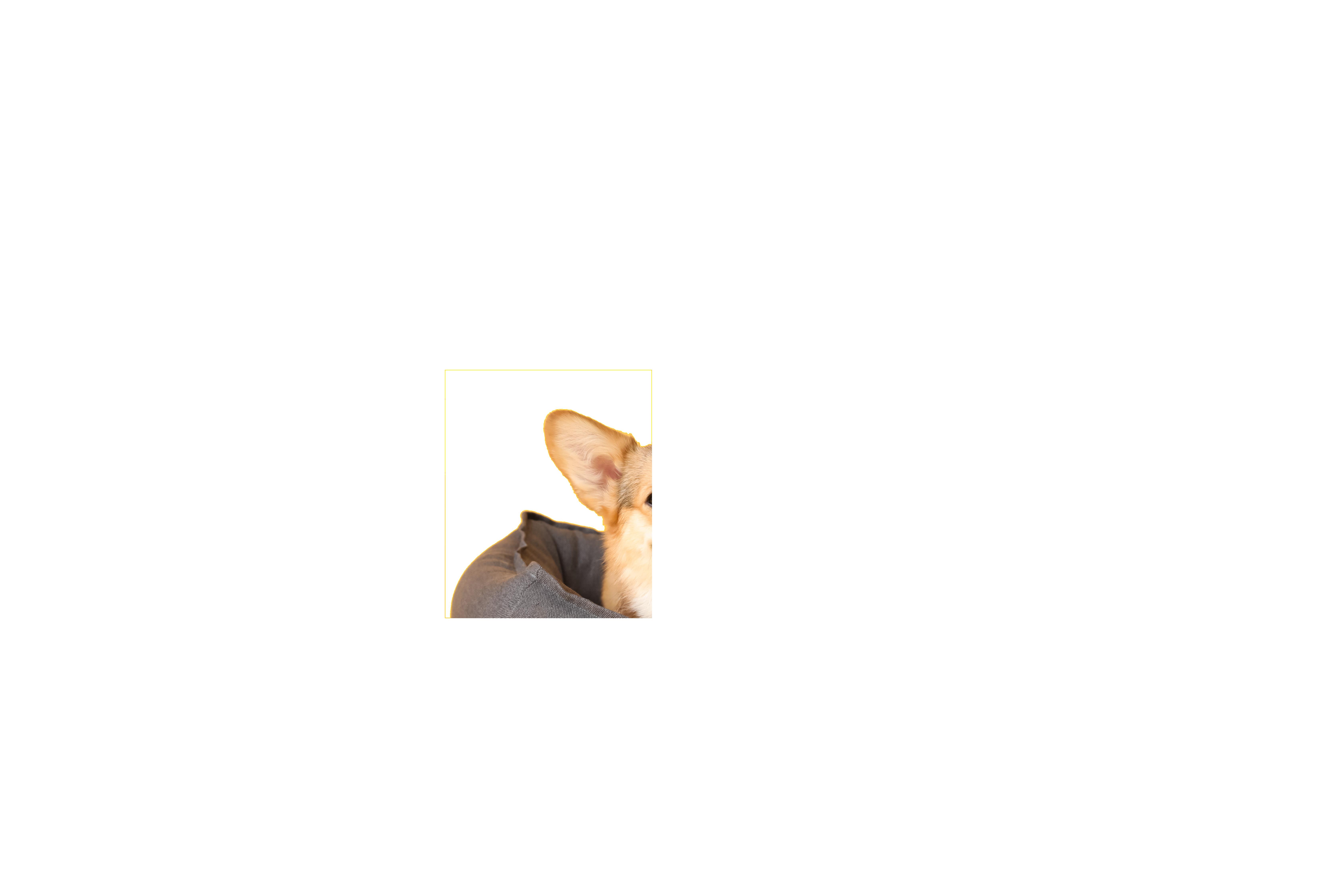

DOG BEHAVIOUR
DOGS ARE ONLY THE SAME IN THAT THEY ARE ALL DIFFERENT
Some dog breeds, such as the Golden Retriever and the Spaniel, are widely assumed to be friendly, happy-go-lucky and good-natured. Others, such as Pit Bull Terriers, Rottweilers and Boxers, are plagued by negative stereotypes, leading to the conclusion that they are dangerous and aggressive.

However, as only 50 of a dog's 20,000 genes are involved in determining appearance, looks are (quite simply) not a good indicator of behaviour. Many other factors are at play. Dogs are complex animals, and influences from training and socialisation to diet and health are more likely to impact how a dog behaves and interacts with the world than his breed alone.
FACTORS TO CONSIDER WHEN CATERING TO YOUR DOG'S UNIQUE NEEDS
1. THEIR OWN FOOD
To ensure your dog is getting the nutrients he needs, you need to pick dog food products that are 'complete' or create a balanced diet for him with the assistance of a nutritionist. Along with addressing his specific
needs, food also needs to appeal to your canine, so you'll need to experiment to work out the flavours and textures your dog prefers. Is he a fish fan? Does he prefer meaty chunks, pate or kibble? Finally, you must adapt your dog's diet to his size, weight, age and energy expenditure.
2. THEIR OWN TREATS
Most dogs love food, and will appreciate food rewards for good behaviour or progress in training. However, dogs vary in the type of food reward they enjoy, and some (admittedly rare) pups are not food-driven at all and instead prefer praise and scratches!
3. THEIR OWN BED
Every dog needs a bed of their own. Your pet's size and sleeping style need to be considered when choosing a bed, as does the surrounding area's temperature. Older dogs or those with joint pain might benefit from a memory foam bed, burrowers (like Dachshunds) often prefer cave-style beds, and chew-proof options are available for those who love a good gnaw.
DQ | 5B 46 DOG BEHAVIOUR

DQ | 5B 47 DOG BEHAVIOUR
DID YOU KNOW?
When we look at a dog, we see only approximately 50 of their nearly 20,000 genes.



DQ | 5B 48 DOG BEHAVIOUR
4. APPROPRIATE FRIENDS
Although dogs are generally friendly, they don't like everyone. Your pooch may gravitate towards certain friends more than others, and this can be for a number of reasons. Respect their choices, and where possible, allow them to be picky about who they choose to hang out with.
5. SCRATCHY SPOTS
Each dog has a favourite place to be scratched or loved. Contrary to popular belief, most dogs do not love being hugged and interpret this as an act of dominance on your part. Instead, find time to get to know the places they are comfortable and happy to be touched and focus on these for excellent bonding time with your canine.
6. THEIR OWN TOYS
Toys are important for most of our four-legged friends, but not all dogs like playing the same games. While balls are a must for most high-energy dogs who love to fetch, others might prefer a game of tug-of-war with a rope toy. Similarly,
where some dogs will become devoted to a plush toy and carry it around like a baby, others will chew it to pieces, and while some love a squeaky toy, others can get a fright with this unusual noise and never touch the toy again.

7. THEIR OWN BRUSH
Each dog in your family should have their own brush. As dog fur varies dramatically in length and texture, different brushes are needed for different coats. Yet, even if your dogs are all of the same breed, you should still have different brushes to avoid spreading infections or skin conditions from one dog to another.
TAKE HOME MESSAGE
While breed can give us some indication about the character of our dogs, each dog is ultimately unique and should be treated as such. Even if you own multiple dogs, considering each one as an individual in their own right and ensuring their unique needs are met will go a long way to ensuring a happy, healthy hound!
DQ | 5B 49 DOG BEHAVIOUR
HEALTHY TREATS
YOU CAN FIND IN YOUR KITCHEN
Lots of great healthy treats for our dogs can be found in our fridge and fruit bowls. Here we look at a selection of fruits and vegetables that make terrific treats for our dogs; the great news is that these treats are not just easy to find, they are also nutrient-dense, low in calories and great for health too.
DQ | 5B 50 DOG HEALTH 10
1. APPLES

Apples are good for dogs, just like people. They are full of nutrients and fibre, which is ideal for gut health. Just make sure not to let your precious pooch have the seeds or the core.
2. BANANAS
Bananas are loaded with healthy nutrients, and dogs tend to really enjoy them. Just be careful not to feed too much banana, as these fruits are very high in sugar.

DQ | 5B 51 DOG HEALTH
3. BROCCOLI

Cruciferous vegetables like broccoli have well-known health benefits for humans and dogs. Broccoli can be fed raw, roasted or steamed but must be plain, i.e. without seasoning. Like humans, dogs often have an easier time digesting high-fibre foods that have been cooked, but either raw or cooked is safe.

4. BLUEBERRIES
Blueberries are healthy and easy treats to share with your pooch!

DQ | 5B 52 DOG HEALTH
5. CARROTS


Lots of dogs love carrots! Loaded with beta carotene and other vitamins, carrots make ideal treats. Cut up some bite-sized pieces and use them as a healthy reward when your dog has been a really good boy!
6. GREEN BEANS
Dogs can eat green beans as long as they are not seasoned. These are great sources of greens and fibre.

DQ | 5B 53 DOG HEALTH
7. GREEN PEAS

Fresh or frozen green peas make excellent treats. Hand your dog a couple as training treats or even put some in their bowl.
8. STRAWBERRIES
Strawberries are very sweet and contain lots of vitamin C. Just like bananas, however, they are high in sugar, so keep this in mind when feeding them to your dog.

DQ | 5B 54 DOG HEALTH
9. SWEET POTATOES – COOKED!
Cooked sweet potatoes are a little less convenient than the other treats listed here, but once cooked, they can be kept in the refrigerator for a couple of days. The key here is that they MUST be cooked. You cannot feed a dog raw potato of any kind.

10. WATERMELON


Most dogs love watermelon as a tasty and hydrating snack. Just be sure to remove any seeds, and don’t give your dog the rind.
FINAL POINTS
When trying out new treats for your dog, it is always best to start with small portions to see how your dog’s gut copes. Introduce treats gradually, and you have a greater chance of the gut adapting to tolerate them.
DQ | 5B 55 DOG HEALTH
VEGETABLE MUFFINS
SNEAKING VEG INTO YOUR DOG’S DIET

DID YOU KNOW?
Including appropriate fresh vegetables and a few berries, even three times a week can positively impact your dog's health.
DQ | 5B 56 DOG HEALTH
It can be tricky to incorporate vegetables into your dog's diet, yet we all know the benefits of adding fresh vegetables and berries. One way to tempt even the fussiest eater to eat some veg is to put them into another tasty treat, such as the muffin described in this recipe. Once made, these muffins can be fed whole or broken into small sections depending on the size of your dog.
Vegetables to include would be broccoli, a slice of red or orange sweet pepper, kale, asparagus, spinach, parsley, green beans, shitake mushrooms and blueberries. If adding vegetables with firm stems, cut them into small pieces of similar size so that they cook evenly.
INGREDIENTS
• Four large free-range eggs whisked
• A selection of raw or lightly cooked vegetables finely chopped
• Small tinned sardines, if required
YOU WILL NEED
• A muffin tin
• Oven-proof paper liners or coconut oil to lightly grease the tin
DIRECTIONS
• Arrange the chosen vegetables into the muffin tray so they take up approximately half of the individual mould. If you know your dog has rejected all attempts to eat vegetables in the past, then adding a single small tinned-sardine mash into the veg before spooning it into the moulds might be a game changer!
• Whisk the eggs and top up each mould, bearing in mind they will rise slightly as the eggs cook.
• Place in the centre of a pre-heated oven (180 degrees Celsius) for approximately 20 minutes or just until the egg has set.
• When cool, lift the muffins out of the tray and either store them in the fridge for up to three days or freeze them and take out what is needed a few hours prior to feeding.
Note: Ideally, vegetables and berries should be included raw. However, if your dog refuses to eat raw vegetables, cook them lightly. This can make them more palatable and still keeps most of the health benefits.

DQ | 5B 57
DOG HEALTH
EDUCATION IS KEY TO A BETTER FUTURE
TEACHING ANIMAL HEALTHCARE AND DISEASE PREVENTION
TEARS
rescues and treats approximately 1050 animals every month. Over 400 of those cases involve deliberate acts of cruelty and/or long-term abuse in the form of short chains, malnutrition, preventable disease, over-exposure, dog fighting and incidences of bestiality.
EDUCATION IS THE KEY
Tackling the problem starts with education. We are passionate about using humane education as a foundational anchor for teaching children about caring responsibly for their pets. Animal abuse and neglect can only be countered through compassionate education, pet care training and youth enrichment at a grassroots level.
DQ | 5B 58
WELFARE

DQ | 5B 59
You can help us in expanding our educational outreach programme to reach more schools in vulnerable communities where we aim to empower, inspire and create a positive change in behaviour through humane education.
TEARS launched a pilot Community Education and Pet Care Training Programme in Vrygrond in the second week of September. The eight-week course was hosted by two TEARS Animal Welfare Co-ordinators and a registered TEARS Animal Behaviourist. The course combined dog and pet care training with an understanding of the Five Freedoms and took place at Capricorn Primary School for children aged between eight and 18 years old. The Programme promoted positive attitudes such as compassion, empathy and respect for all life and included free sterilisations and vaccinations of dogs and cats within the area to prevent the spread of infectious animal diseases and curtail illegal breeding and pet overpopulation.
MAKE A DIFFERENCE
Make a difference. Partner with TEARS and help us extend our education mandate and reach more at-risk youth.
Support Community Education here: https://tears.devman.co.za/ devman/online/commedu/
Your donation will help TEARS to enrich lives and inspire a new generation.

WELFARE
DQ | 5B 60




DQ | 5B 62
Text | Bianca Rootman
With animal companions becoming more and more part of the family, many people opt for holidays that include them. And this, in turn, means travelling - often long distances - with them in tow. South Africa is not as geared to pet travel as Europe, but the situation is changing as more people search for travel options for their dogs and cats. This article looks at travelling in a car with a companion (or two) in South Africa.
The key to successful travel with your animal companion lies in planning and preparation. Consider the following:
Safety is imperative for you and your companion. A dog that is loose in a car can become a hurtling cannonball in the event of a sudden stop or a collision. Placing your companion in a crate reduces the risk of injury to your companion and passengers in the car in the event of an accident. It also stops your dog from crawling beneath the pedals, which is obviously dangerous. If your companion does not have a carrier, buy one and introduce them safely and calmly to this space. Once the positive association is made, travel will be easier.
Ensure that your companion has enough space in the crate or area in the car where he/ she will be expected to stay. They need to be able to stretch out and be comfortable for the journey.
The crate or area inside your vehicle should have a soft cushion or blanket for maximum

DQ | 5B 63
The continuous stopping and starting, turning and movement of a vehicle can wreak havoc with the balance system of a dog, bringing on motion sickness. If your companion is not accustomed to travelling long distances in a car, it may be advisable to gradually ease him/her into travel by taking them for a daily drive which gradually becomes longer. Placing your companion in a carrier that can be securely fastened will also reduce the likelihood of motion sickness.


DQ | 5B 64
A veterinary checkup in the two weeks preceding the vacation is recommended. Any health concerns can be discussed, as well as the need for any travel documentation or permits. If travelling across southern African borders, then a State Veterinary Certificate and certain vaccinations are required. This consultation will also afford the opportunity to discuss the need for sedation. Do you need medication for motion sickness? Is your companion using chronic medication? If so, do you have sufficient stock for the trip? Do you need a report from your vet in case of an emergency? Can your vet recommend any practitioners in the area to which you wish to travel (a classmate or previous business associate) in the event that you require veterinary services when on holiday?
Ensure that your companion has a means of identification. Many things can happen when in unfamiliar locations that can result in your companion getting lost. A collar and tag are visible but can be lost or removed. A microchip cannot be removed, and all welfare organisations and veterinary practices can scan lost companions that are presented to them. This can prevent great heartache in the event of an accident. So, a collar and/or harness with a tag and a microchip are recommended.

DQ | 5B 65
Exercise your companion before departure. Tired companions will be inclined to sleep during the journey.
It is recommended that companions travel on only a small amount of food, with small amounts being offered every three hours when stopping to rest. So, one or two biscuits for breakfast are best to prevent any accidents from happening in the car. Do not feed your companion in a moving vehicle. Be certain that you have enough of their food to take with you or that you will be able to purchase their specific food at your destination. This is particularly important for companions who have sensitive stomachs. You do not want your holiday marred by frequent visits to the local vet. It may also be worthwhile to take water from home or to use bottled water if you have a fussy drinker or eater. Not all water tastes the same, and some dogs are very particular about the water they will drink.
Stop frequently when on the road. A stop at least every three hours is recommended. Ensure you have a harness/collar and lead in the car in order to restrain your companion when leaving your vehicle. Dogs may sometimes be frightened and bolt into traffic in the area; having a means of control will prevent this. Walk your companion and allow them to sniff around. Make sure to offer your companion a sip of water on these breaks too.

DQ | 5B 66
Ensure that you have a fully stocked first aid kit available at all times. Accidents happen, and it is always better to be prepared for any form of emergency. Having a basic understanding of first aid treatment for animals is also beneficial.
Please do not assume that every establishment will allow all pet types and breeds. Prior arrangement is essential. There are so many great websites that list pet-friendly accommodation and stops, so please ensure you plan ahead.
THE LISTED WEBSITES MAY BE USEFUL WHEN SEARCHING FOR APPROPRIATE ACCOMMODATION.
https://www.sa-venues.com/south-africa-pet-friendly.htm
http://www.getaway.co.za/travel-ideas/pet-friendly-travel-ideas/

http://holidogz.co.za/index.php
https://petfriendly.co.za/
https://www.safarinow.com/destinations/south-africa/pet-friendly.aspx
https://www.holidawgs.com/

154 President Brand Str, Rynfield, Benoni
Contact: 083 230 2188
Email: animalhealths@gmail.com
Contact: 074 251 4410
Email: ahahpretoria@gmail.com
ANIMAL HEALTH AND HYDRO RYNFIELD
ANIMAL HEALTH AND HYDRO PRETORIA EAST
218 Mark St, Grootfontein County Estates, Pretoria East, Grootfontein Country Estates
67
YOUR DOG QUESTIONS ANSWERED
My dog has a few lumps on his chest under his skin. We have had these checked by the vet, and they are lipomas (fatty lumps). Our vet has recommended that we leave these at the moment as they do not seem to be bothering our dog, and they are only very small. However, I do know a few people who have these removed from their dogs, and I’m wondering if I’m making the right call.
Fatty lumps or ‘lipomas’ can be left alone, providing they are not affecting your dog’s usual
way of life and the vet doesn’t have any concerns that they may develop into something more serious. As these lumps are not usually a cause for concern, many owners, like yourself, choose not to put their dogs under anaesthetic due to the associated anaesthetic risks. These anaesthetic risks are very real, and if your vet doesn’t feel the lumps need removing, then we would advise you to follow their advice. However, if in future your dog requires an anaesthetic for another reason, such as for dental work, you can request for the lumps to be removed at the same time.

DQ | 5B 68 ?
What can you do for a dog with reoccurring Helicobacter pylori bacteria in his stomach that give him acid reflux?
This condition requires a discussion with your vet as it is a tricky issue to manage effectively. If the initial diagnosis was made, and the treatment was not effective, your vet may want to refer you to a specialist in order to carry out more in-depth
diagnostic tests such as an endoscope or biopsy of the stomach and digestive tract. These procedures are vital to ensure that the bacteria have been correctly identified so that they are treated with the appropriate medication to maximise the chances of success.
As well as appropriate medical treatment, it has been suggested that easily digestible diets can help manage the condition and reduce the likelihood of reoccurrence. Your vet will be able to advise you on the best overall course of action to help aid with recovery.
DQ | 5B 69 Q&A
Products we love
PaleoPet Pure THERAWPY Duck, Pear and Ginger Meal for Dogs

This is a power packed and highly palatable product with pear and organic ginger! Pear contains pectin which aids digestion and ginger is not only a digestive aid, but also contains minerals like manganese, which is necessary for cruciate tendon health.
This product is lower in protein, fat and phosphorus than our PaleoPet Pure Classic Complete Meals, and so is ideal for older dogs requiring a bit more fibre and some digestive help, or dogs with liver or kidney issues.
As this product contains only duck protein, it is a great alternative for dogs with chicken allergies.
As with all PaleoPet Pure Complete meals a
healthy dose of Omega 3 from sustainably sourced phytoplankton is added, along with Kelp and Vitamin E.
The PaleoPet Pure range is FSA Food Safety certified and DALRRD registered. All products are produced using human food grade ingredients in an Audited Food Safe Facility.
Available in convenient, pre-frozen 1.5kg and 750g tubs or as a box of 12 individually wrapped 100g patties. The tubs are re-usable, recyclable and PBA-free.
Products can be purchased online at www.paleopetpure.com or at selected retailers.
DQ | 5B 70
fun
Shopping
follow us on Instagram @dogquarterlymag and Facebook dqmagazine
stay tuned for the next issue of
DQ | 5B 71
DQ | 5B 72 NEXT ISSUE 15TH MAY 2023 www.dqmagazine.co.za




























































































































 TEXT: RHIANNON CECIL
TEXT: RHIANNON CECIL









































